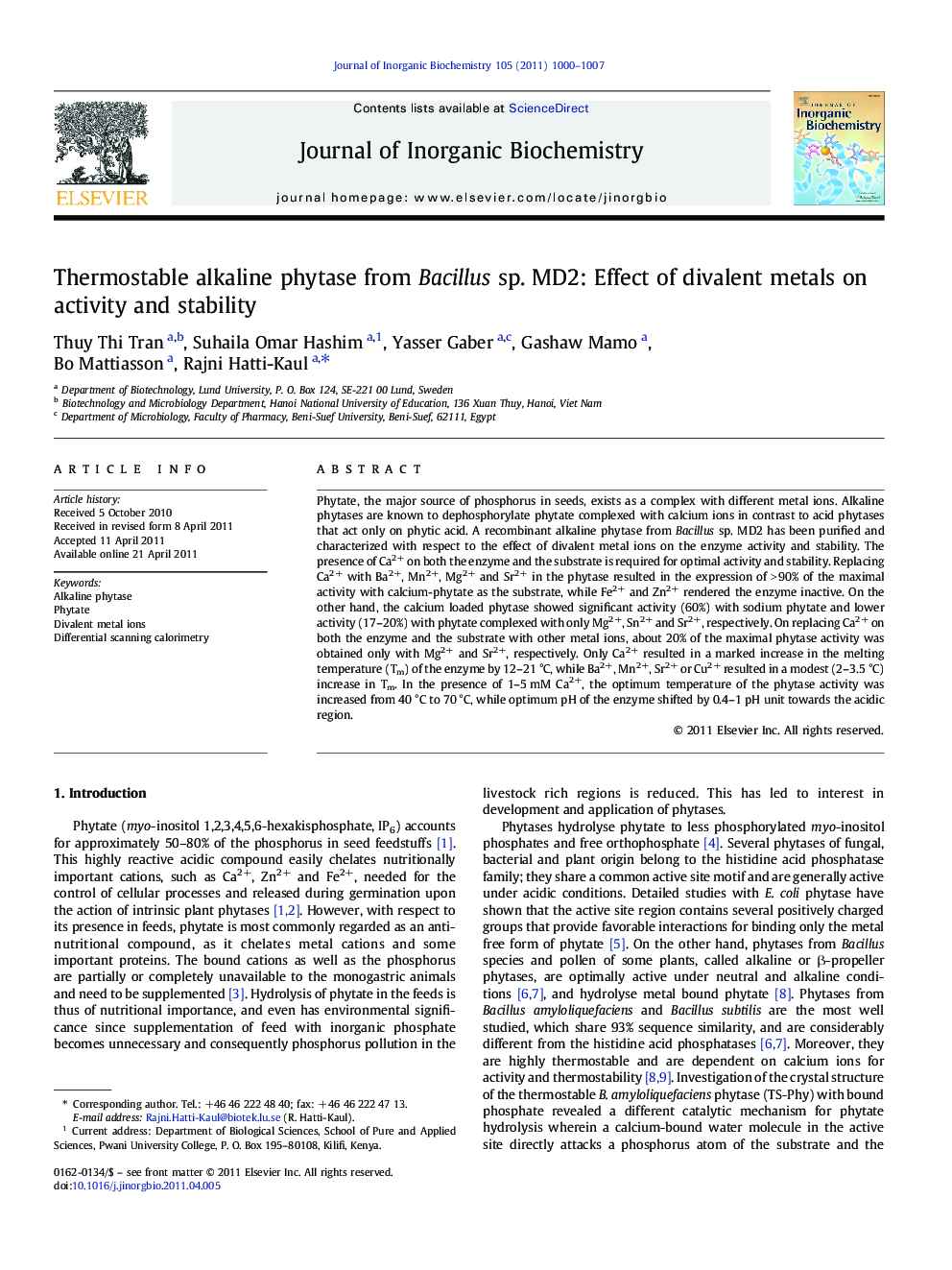| Article ID | Journal | Published Year | Pages | File Type |
|---|---|---|---|---|
| 1316187 | Journal of Inorganic Biochemistry | 2011 | 8 Pages |
Phytate, the major source of phosphorus in seeds, exists as a complex with different metal ions. Alkaline phytases are known to dephosphorylate phytate complexed with calcium ions in contrast to acid phytases that act only on phytic acid. A recombinant alkaline phytase from Bacillus sp. MD2 has been purified and characterized with respect to the effect of divalent metal ions on the enzyme activity and stability. The presence of Ca2+ on both the enzyme and the substrate is required for optimal activity and stability. Replacing Ca2+ with Ba2+, Mn2+, Mg2+ and Sr2+ in the phytase resulted in the expression of > 90% of the maximal activity with calcium-phytate as the substrate, while Fe2+ and Zn2+ rendered the enzyme inactive. On the other hand, the calcium loaded phytase showed significant activity (60%) with sodium phytate and lower activity (17–20%) with phytate complexed with only Mg2+, Sn2+ and Sr2+, respectively. On replacing Ca2+ on both the enzyme and the substrate with other metal ions, about 20% of the maximal phytase activity was obtained only with Mg2+ and Sr2+, respectively. Only Ca2+ resulted in a marked increase in the melting temperature (Tm) of the enzyme by 12–21 °C, while Ba2+, Mn2+, Sr2+ or Cu2+ resulted in a modest (2–3.5 °C) increase in Tm. In the presence of 1–5 mM Ca2+, the optimum temperature of the phytase activity was increased from 40 °C to 70 °C, while optimum pH of the enzyme shifted by 0.4–1 pH unit towards the acidic region.
Graphical AbstractCa2+ in the phytase from Bacillus sp. MD2 and its substrate, phytate, were substituted by different divalent metal ions. Ba2+, Mg2+, Mn2+, Sr2+ in the enzyme molecule could give comparable activity as with Ca2+ but much lower stability. Ca2+ on the substrate is also important for the enzyme activity.Figure optionsDownload full-size imageDownload as PowerPoint slide
